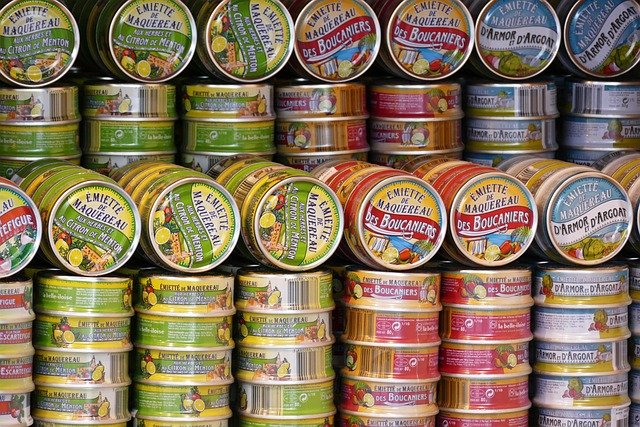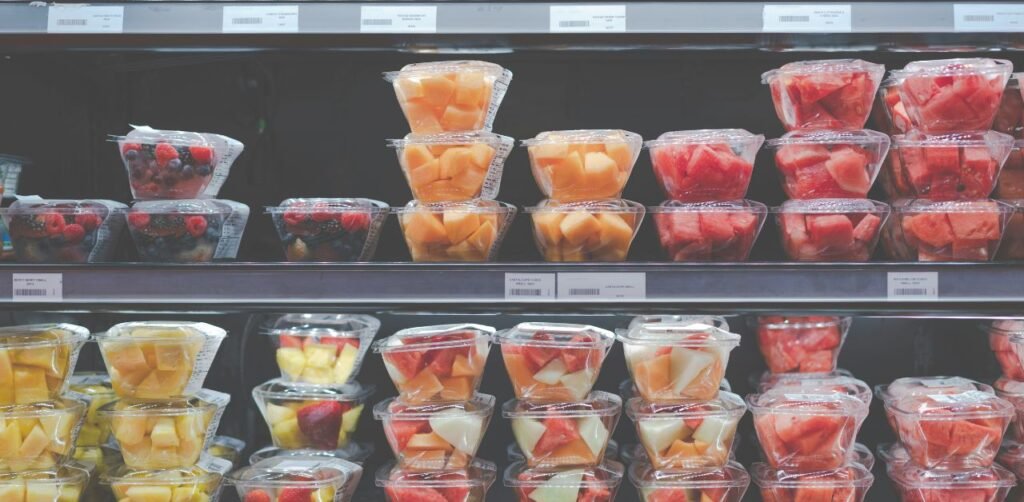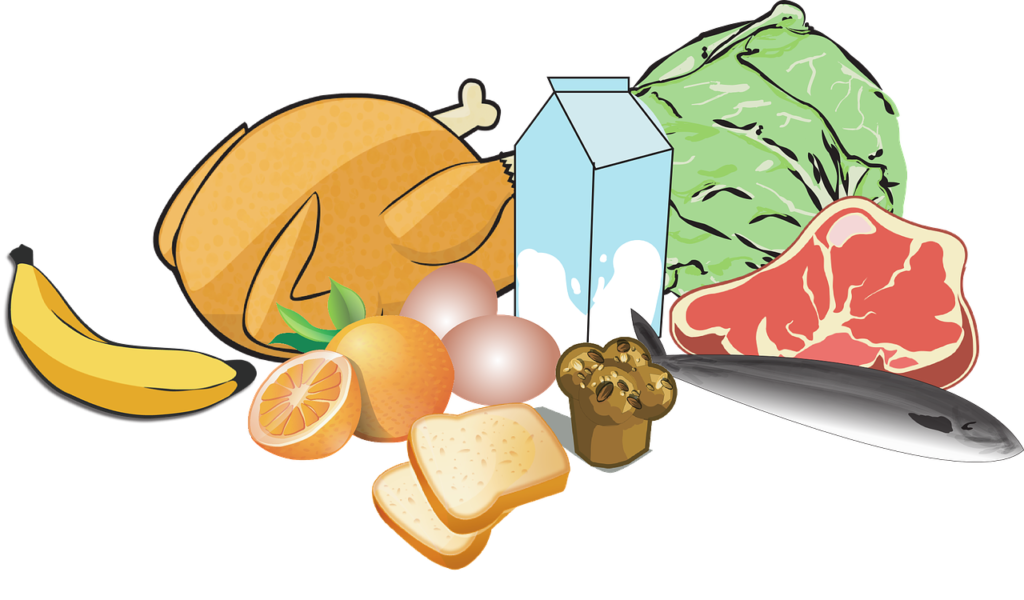One of the most effective strategies for preventing foodborne illnesses is to adopt a food storage hierarchy.
Don’t worry, you are not the only one who hear this expression for the first time.
And you will not be the same after reading this post.
Simply when we somebody asks what is the best way to prevent poor food safety, this is one of the keys for the answer.
In this post, we will explore the hierarchy of food storage concepts and their role in preventing poor food safety.
We will discuss the factors that influence the hierarchy, provide practical tips for building your own, and highlight the benefits of adopting this approach.
By the end of this article, you will have a better understanding of how to prioritize food storage and protect yourself and your loved ones from foodborne illnesses.
What is the food storage hierarchy ?
A food storage hierarchy is a systematic approach to organizing and storing food items based on their shelf life, perishability, and potential for causing food poisoning.
By understanding and implementing a food storage hierarchy, you can significantly reduce the risk of foodborne illnesses and ensure the safety of your food supply.
The term “food storage hierarchy” gained prominence in the late 20th century.
Food safety experts recognized the need for a standardized framework to guide consumers and food businesses in preventing foodborne outbreaks.
By understanding the different levels or categories of food storage, you can effectively prioritize and store your food to minimize the risk of foodborne illnesses.
There are typically three main levels or categories within a food storage hierarchy:
1- Short-term storage:
This category includes highly perishable foods that need to be consumed or prepared within a short period.
Examples of short-term storage items include:
- Fresh fruits and vegetables
- Raw meat, poultry, and seafood
- Dairy products (e.g., milk, cheese, yogurt)
- Eggs

2- Long-term storage:
This category includes foods that have a longer shelf life and can be stored for several days, weeks, or even months.
Examples of long-term storage items include:
- Canned goods
- Frozen foods
- Dried goods (e.g., pasta, rice, beans)
- Shelf-stable dairy products (e.g., milk alternatives)
3- Emergency storage:
This category includes non-perishable food items that are specifically intended for emergencies.
Examples of emergency storage items include:
- Canned meats and vegetables
- Dried fruits and nuts
- Energy bars
- Water

By understanding these categories and their associated food items, you can effectively prioritize your food storage and ensure that perishable items are consumed or prepared promptly.
Factors Influencing Food Storage Hierarchy
Several factors can influence where specific foods should be placed in a food storage hierarchy.
These factors include:
Shelf life:
The length of time a food can be stored without spoiling or becoming unsafe to eat.
Highly perishable foods, such as fresh fruits and vegetables, have shorter shelf lives and should be stored at the front of the refrigerator.
On the other hand, canned goods and frozen foods can be stored for longer periods and can be placed towards the back.
Nutritional value:
Some foods, such as fresh fruits and vegetables, are more nutritious when consumed shortly after harvest.
These foods should be prioritized for consumption to maximize their nutritional benefits.
Perishability:
Perishable foods are more susceptible to spoilage and should be stored carefully to prevent contamination.
Examples of perishable foods include raw meat, poultry, seafood, dairy products, and eggs.
Storage of these foods in an improper way will increase the chance of cross-contamination and cause foodborne illnesses.
Personal preferences:
Your individual preferences and dietary needs can also influence your food storage hierarchy.
For example, if you frequently consume a particular food item, you may want to store it in a more accessible location.
Emergency preparedness:
If you are preparing for emergencies, you may want to store non-perishable food items in a designated location that is easily accessible.
By considering these factors, you can create a personalized food storage hierarchy that meets your specific needs and helps to prevent poor food safety.
How to build a safe Food Storage Hierarchy ?
To create a personalized food storage hierarchy in a safe way, follow these steps:
1- Assess your storage space:
Determine the size and layout of your refrigerator, freezer, and pantry.
This will help you plan to organize your food items effectively and avoid wasting food.
2- Categorize your food:
Divide your food items into three main categories: short-term, long-term, and emergency storage.
3- Prioritize food items:
Within each category, prioritize food items based on their shelf life, nutritional value, perishability, and personal preferences.
Consider the above mentioned factors.
4- Organize your refrigerator:
Store highly perishable items, such as fresh fruits and vegetables, raw meat, poultry, seafood, dairy products, and eggs, in the refrigerator’s coldest section (usually the top shelf).
But do not forget to pack them well to avoid cross-contamination.
Place less perishable items, such as cooked meats and leftovers, in the middle or bottom shelves.
5- Organize your freezer:
Store frozen foods in a way that allows for easy access and rotation.
Label all frozen items with the date of freezing to ensure freshness.
6- Organize your pantry:
Arrange canned goods, dried goods, and other non-perishable items logically.
Use labels to identify the contents of each container and the expiration date.
You need to consider the FIFO method while doing this step.
7- Rotate your food:
Regularly check your pantry and refrigerator to ensure that food items are not expired or nearing their expiration date.
Rotate older items to the front to ensure they are consumed first. This is exactly what the letters FIFO refer to in food storage
You can create a safe and efficient system for storing your food following these guidelines and customizing your food storage hierarchy to your specific needs.
The Role of Food Storage Hierarchy in Preventing Poor Food Safety
A well-structured hierarchy of food storage plays a crucial role in preventing poor food safety and foodborne illnesses.
By following the guidelines outlined above, you can gain the following benefits:
Prevent foodborne illnesses:

Proper food storage can help to prevent the growth of harmful bacteria, viruses, and parasites that can cause food poisoning.
By storing perishable items at the appropriate temperatures (avoiding the temperature danger zone) and rotating food items regularly, you can minimize the risk of contamination.
Reduce food spoilage:
By storing food items according to their shelf life and perishability, you can help to prevent food from spoiling prematurely.
This can reduce food waste and save you money.
Prevent cross-contamination:
Cross-contamination occurs when harmful bacteria or other pathogens are transferred from one food item to another.
By storing raw meat, poultry, and seafood separately from other food items, you can help to prevent cross-contamination.
Ensure food quality:
Proper food storage can help to maintain the quality and nutritional value of your food.
By storing food items correctly, you can help to prevent them from becoming dry, discolored, or flavorless.
Save your money
Not only by reducing food spoilage, if you are a business owner, you can avoid the economic impacts of foodborne illness by taking care of your storage practices.
Conclusion:
A food storage hierarchy is a valuable tool for ensuring food safety and preventing foodborne illnesses.
By understanding the different levels of food storage, prioritizing food items based on their shelf life and perishability, and following safe food handling practices, you can significantly reduce the risk of contamination and spoilage.
Remember to assess your storage space, categorize your food items, and organize your refrigerator, freezer, and pantry accordingly.
Regularly rotate food items to prevent spoilage, and practice safe food handling techniques to minimize the risk of cross-contamination.
By following these tips, you can master how to reheat fried food, making sure it’s safe to eat and just as delicious as when it was first cooked.
By adopting a food storage hierarchy and following these guidelines, you can create a safe and efficient food storage system that protects your health and well-being.
Preventing poor food safety is a crucial aspect of maintaining a healthy lifestyle, and a well-structured food storage hierarchy can play a significant role in achieving this goal.



